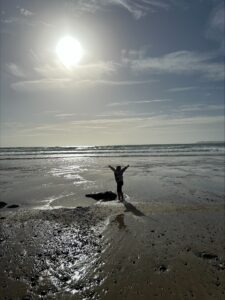Wartime Convoys In The Milford Haven Waterway
The flooded Cleddau River valley in Pembrokeshire was described by Admiral Lord Horatio Nelson on his famous visit with the Hamiltons. He said that it was the next best natural harbour to Trincomalee in Ceylon (now Sri Lanka) that he had ever seen.
During both World Wars the Milford Haven waterway become the collecting place as well as the destination for convoys. The German strategy was to defeat Britain by cutting off her supplies of essential items (food, oil, metals) that were brought by sea.
During WWI Germany initiated unrestricted submarine warfare on 1st February 1917. The USA broke off diplomatic relations with Germany on 3rd February 1917. Germany was in a hurry to defeat Britain before the USA entered the war. The result was that sinking of British ships rose catastrophically, until by April 1917 one in four ships leaving Britain did not return.
The answer was to form convoys of ships with naval escorts. The Admiralty at first resisted the introduction claiming that merchant ships would be unable to keep station in the convoys. However Prime Minister Lloyd George insisted that the Admiralty introduce convoys. The first convoy left Gibraltar for Britain on May 10 1917. Ship losses dropped dramatically to levels where the shipyards could replace the ships. By the end of the war 80% of shipping coming to or leaving British ports was in convoys. U-boat losses increased. Things were still strained in Britain so that food rationing was introduced in 1917. Despite this Britain as not defeated and Germany lost the war.
During World War II, the convoy system was introduced immediately. In Milford Haven, the assembly, briefing and despatch of the convoys was the responsibility of the Naval Base at Milford Haven. It was situated in a disused school in St. Peter’s Road, with the main signal post on top of the Bethal tower. Many WRENS (Womens Royal Navy Service) working at the Naval Base were housed in Murray Crescent House. Sailors at the base were not as fortunate and were housed in a Nissan hut complex between Albion Street and Stratford Road. Briefing meetings for masters of merchantmen and the captains of escort vessels were held in the dining room of the Lord Nelson Hotel and South Hook Fort.
The Milford Haven convoys were the Western Approaches Convoys and they assembled in the waterway from 1939 to 1945. The greatest amount of shipping in the waterway was in the few days preceding D-Day. All left in the night two days before the landings leaving the waterway strangely empty. The build up to D-Day began in January 1944 when 125 merchant ships and 130 naval vessels used the port. In February the figures were 270 and 358; for March 248 and 425; April 298 and 427; May 259 and 597; June 226 and 461.
The convoys assembled in Dale Roads. They usually left around tea time. By evening they were usually in the Smalls area.


